Knitting Stitches Guide For Beginners Learn How to Knit, Volume 1 Lisa Lewis Published by Lisa Lewis, 2014.
While every precaution has been taken in the preparation of this book, the publisher assumes no responsibility for errors or omissions, or for damages resulting from the use of the information contained herein. KNITTING STITCHES GUIDE FOR BEGINNERS First edition. January 8, 2014. Copyright 2014 Lisa Lewis. ISBN: 978-1497710627 Written by Lisa Lewis. 10 9 8 7 6 5 4 3 2 1
Also by Lisa Lewis Learn How to Knit Knitting Stitches Guide For Beginners How to Knit Scarves: The Easy Way How to Knit Socks: The Easy Way "How to Knit Socks" & "How to Knit Scarves": 2 Book Bundle 2 Book Bundle: "Knitting Stitches Guide" & "How to Knit Socks" 2 Book Bundle: "Knitting Stitches Guide" & "How to Knit Scarves": 3 Book Bundle: "Knitting Stitches Guide" & "How to Knit Socks" & "How to Knit Scarves"
Preface
K nitting is a matter of twisting and turning the strands on a needle to create anything from a simple garter stitch to an intricate Aran pattern.
The way you move your stitches from one needle to the other will create beautiful knitted work and it is not very difficult! In this book, I will give you everything you need to take your knitting to a new level; both in the knitting you create and your enjoyment of advanced fiber therapy. You can start with simple knit and purl stitches...the basics. The order in which you work those stitches will give you interesting textures and patterns. In this book you will also learn several simple techniques so that you can knit lace, cables, eyelets, and other more interesting stitch patterns with ease. The included stitch patterns are not too complex and the completed knitted fabrics they create are beautiful. The instructions for each stitch in the book are written instead of charted.
Written instructions are just plain easier to follow! For any patterns that have a right and wrong side, I indicate it on the instructions: RS = right side; WS = wrong side. If there is nothing noted, the pattern is reversible. I encourage you to try as many of these stitch patterns as you can. You might discover that a certain technique or stitch is more fun than others. We all have our favorites (I admit to being a fan of lace and eyelets). Grab your scrap yarn and get started, because it does not take much practice to perfect your form! The more stitches you learn, the more creative you can get with your knitting.
You might incorporate several different patterns together to create a sampler scarf, or something bigger such as an afghan. You will also be able to add more detail to a sweater or a pair of socks you may knit. The possibilities are endless! Happy Knitting!
Chapter 1: Basic Stitches
I f you are new to knitting or just need a little refresher, this chapter will take you through the knitting basics of casting on, knitting, purling, and binding off.
Casting On
T he first step to knitting is called casting on. This is done by creating the first row of stitches on your needle. This is your foundation and will become one side of your scarf, so it is important to make it neatly.
There are many methods of casting on. Some types are more suitable for specific projects, but the long-tail cast-on is most common. You will never go wrong by mastering the long-tail cast-on technique! In the example above, we determined that the 6-inch scarf requires a total of 24 stitches for the width. Start by measuring a piece of yarn. Allow 1 to 2 inches for each stitch you will be casting on. If you are using a Bulky or Chunky yarn and big needles, you will need 2 inches per stitch (48 inches, or 4 feet).
If you are using finer yarn and smaller needles, you will be fine with the 1-inch estimation. I usually add about 6 inches to my total, just to be safe. Do not cut the yarn. Just hold it where you have measured your desired length. Step One: Make a slip knot at the place where you have marked the length of your yarn for casting on.  S tep Two: Hold the needle in your right hand with your index finger on top, holding the slip knot in place.
S tep Two: Hold the needle in your right hand with your index finger on top, holding the slip knot in place.  S tep Two: Hold the needle in your right hand with your index finger on top, holding the slip knot in place.
S tep Two: Hold the needle in your right hand with your index finger on top, holding the slip knot in place.
Step Three: With your left hand under the needle, wrap one strand around your index finger and the other around your thumb. You should have a triangle shape with your needle at the top point and your two fingers making the two points for the triangle base. Step Four: Bring the needle down so the yarn makes a V between your thumb and forefinger, which are now positioned like you are pointing a gun.  S tep Five: With your right hand, guide the tip of the needle under the left side of the yarn that is looped around your thumb.
S tep Five: With your right hand, guide the tip of the needle under the left side of the yarn that is looped around your thumb.  S tep Six: Guide the needle UNDER this point and OVER the yarn on the right side of your thumb.
S tep Six: Guide the needle UNDER this point and OVER the yarn on the right side of your thumb.  S tep Eight: Swing the needle back THROUGH the loop on your thumb.
S tep Eight: Swing the needle back THROUGH the loop on your thumb.  S tep Nine: You will see that you have a loop on your needle now.
S tep Nine: You will see that you have a loop on your needle now.  S tep Nine: You will see that you have a loop on your needle now.
S tep Nine: You will see that you have a loop on your needle now.
Pull your needle up and release the yarn on your finger. Then pull the two yarn ends to tighten the casted on stitch. Basically, the cast follows this pattern: under your thumb, over your index finger, and back through the thumb loop. Use this as your Cast-on Mantra: Under-Over-Through, Under-Over-Through.... Congratulations! You have your first stitch. Personally, I think casting on is the most complicated part of knitting a scarf.
Once you master this, the rest will be easy. Above exert taken from Knitting Scarves: The Easy Way by Chloe Thompson
The Purl Stitch
A purl is the opposite of a knit stitch. The knit stitch is worked behind the needle that holds the stitches from the previous row. The purl stitch is worked in front of that needle. Instead of sliding your working needle up and under the stitch you are going to knit, you come in from the top and go down. Lets break it down.
Step One: Holding your empty needle in your right hand, insert the tip under the front of the first stitch, coming at it from the top, so the working needle is pointing downward. Form a criss-cross with the two needles. Your working needle should be on top of the one that is holding the stitches.  S tep Two: Hold the criss-crossed needles together with the thumb and forefinger of your left hand. Step Three: With your right hand, wrap the working strand COUNTER-CLOCKWISE around the needle in the front.
S tep Two: Hold the criss-crossed needles together with the thumb and forefinger of your left hand. Step Three: With your right hand, wrap the working strand COUNTER-CLOCKWISE around the needle in the front. 

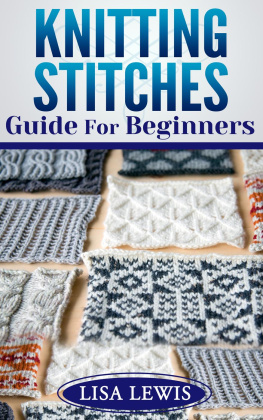
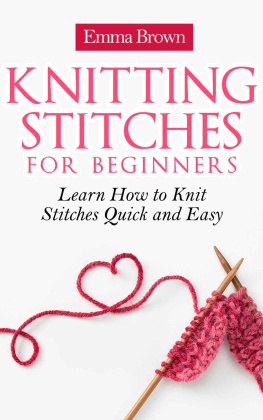


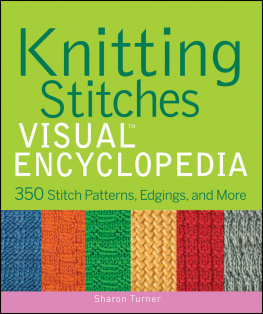
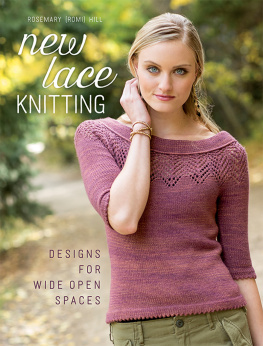

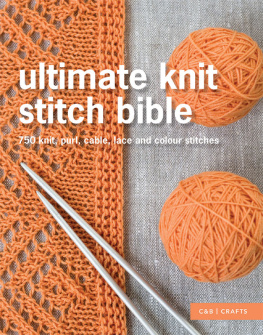

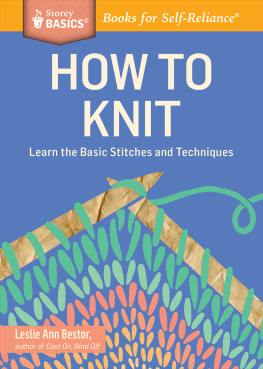
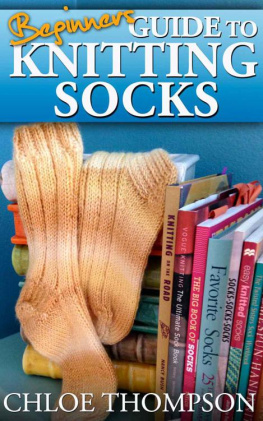
 S tep Two: Hold the needle in your right hand with your index finger on top, holding the slip knot in place.
S tep Two: Hold the needle in your right hand with your index finger on top, holding the slip knot in place.  S tep Five: With your right hand, guide the tip of the needle under the left side of the yarn that is looped around your thumb.
S tep Five: With your right hand, guide the tip of the needle under the left side of the yarn that is looped around your thumb.  S tep Six: Guide the needle UNDER this point and OVER the yarn on the right side of your thumb.
S tep Six: Guide the needle UNDER this point and OVER the yarn on the right side of your thumb.  S tep Eight: Swing the needle back THROUGH the loop on your thumb.
S tep Eight: Swing the needle back THROUGH the loop on your thumb.  S tep Nine: You will see that you have a loop on your needle now.
S tep Nine: You will see that you have a loop on your needle now.  S tep Two: Hold the criss-crossed needles together with the thumb and forefinger of your left hand. Step Three: With your right hand, wrap the working strand COUNTER-CLOCKWISE around the needle in the front.
S tep Two: Hold the criss-crossed needles together with the thumb and forefinger of your left hand. Step Three: With your right hand, wrap the working strand COUNTER-CLOCKWISE around the needle in the front. 